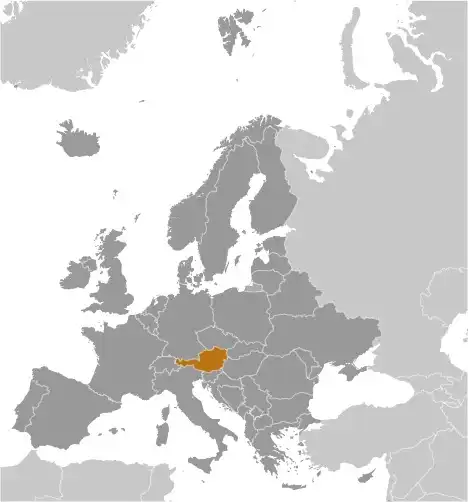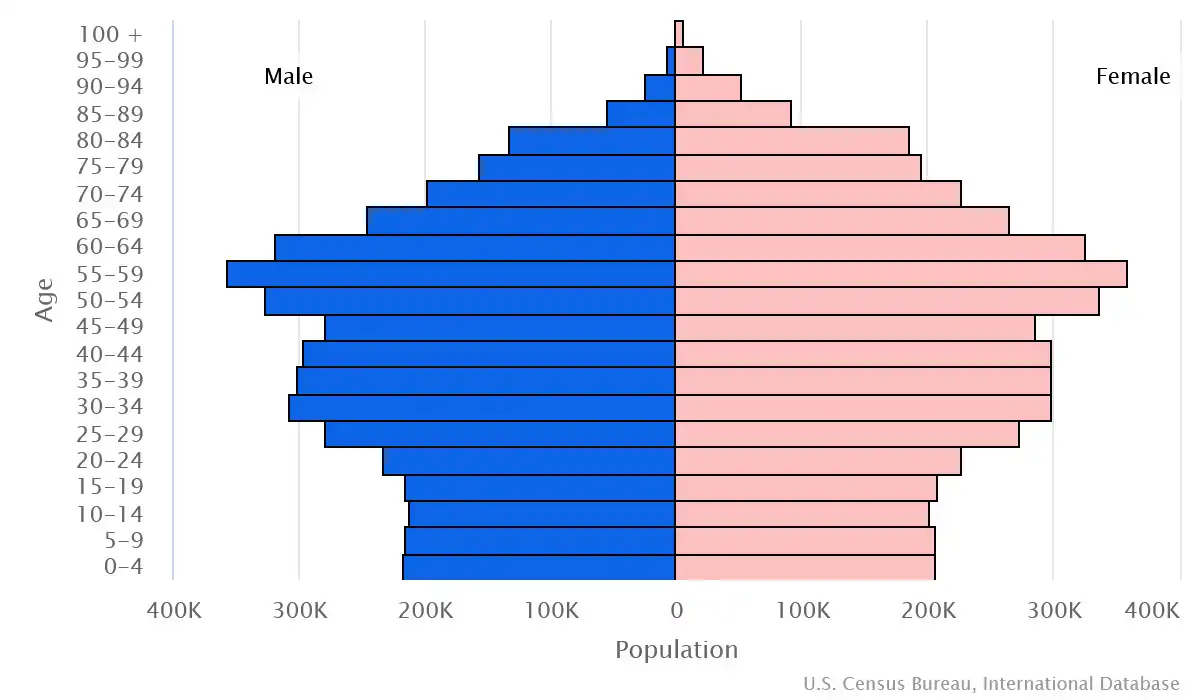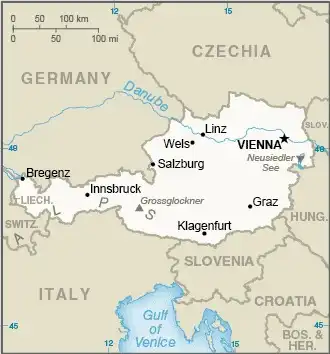
Austria
Veröffentlicht: 17. June 2022 - Letztes Update: 28. February 2025
Country Data Dashboard

Population
8,967,982
Growth: 0.3% (2024 est.)
GDP
$511.685 billion
(2023 est.)
Area
83,871 sq km
| Government type: | federal parliamentary republic |
| Capital: | Vienna |
| Languages: | German (official nationwide) 88.6%, Turkish 2.3%, Serbian 2.2%, Croatian (official in Burgenland) 1.6%, other (includes Slovene, official in southern Carinthia, and Hungarian, official in Burgenland) 5.3% (2001 est.) |
People & Society
Ethnicity (2018 est.)
Religion (2021 est.)
Age structure

Economy
Economic overview
one of the strongest EU and euro economies; diversified trade portfolios and relations; enormous trade economy; Russian energy dependence, but investing in alternative energy; aging labor force but large refugee population; large government debt
Real GDP (purchasing power parity) in Billion $
Real GDP per capita in $
Exports & Imports in billion $
Top 5 Import Partner in 2022 (61%)
Top 5 Import Commodities in 2022
- cars 🚗
- refined petroleum ⛽
- gold 💰
- garments 👕
- broadcasting equipment 📡
Top 5 Export Partner in 2022 (61%)
Top 5 Export Commodities in 2022
- cars 🚗
- packaged medicine 💊
- vaccines 💉
- plastic products ♻️
- electricity ⚡
Geography
Map

Area
Natural resources
- oil 🛢️
- coal ⚫
- lignite 🪨
- timber 🌲
- iron ore ⛓️
- copper 🟧🪙
- zinc 🔩
- antimony 🏺
- magnesite 🏔️
- tungsten 🔧
- graphite ✏️
- salt 🧂
- hydropower 💧⚡
Climate
temperate; continental, cloudy; cold winters with frequent rain and some snow in lowlands and snow in mountains; moderate summers with occasional showers
Historical Background Information
Once the center of power for the large Austro-Hungarian Empire, Austria was reduced to a small republic after its defeat in World War I. Nazi Germany annexed Austria in 1938, and the victorious Allies then occupied the country in 1945. As a result, Austria's status remained unclear for a decade after World War II, until a State Treaty signed in 1955 ended the occupation, recognized Austria's independence, and forbade unification with Germany. A constitutional law that same year declared the country's "perpetual neutrality" as a condition for Soviet military withdrawal. Austria joined the EU in 1995, but the obligation to remain neutral kept it from joining NATO, although the country became a member of NATO's Partnership for Peace program in 1995. Austria entered the EU Economic and Monetary Union in 1999.
